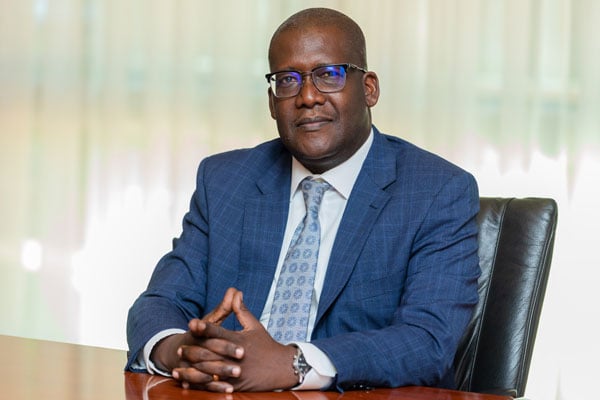World’s longest trucks queue waits at Uganda’s land border

Author: Charles Onyango Obbo. PHOTO/FILE
What you need to know:
- Nearly all the price spike for Uganda has been caused by the supply chaos involving the trucking of fuel. Last week I saw first-hand what that looks like, and it was impossible to believe.
On Saturday, some Ugandan motorists screamed to high heavens when the price of a litre of petrol at some places hit Shs9,000. That price was not extremely high, but it also marked a big change in the symmetry of East African regional economies.
In this fuel business, Uganda had an unlikely advantage for a landlocked country over its coastal neighbours Kenya and Tanzania, through which its petroleum products are imported. Because of a combination of having the freest foreign exchange regime in the region, a relatively less burdensome tax rate, and a first-mover advantage in liberalising its fuel market, prices in Uganda were always near-equal or, surprisingly, cheaper than in Kenya through which the bulk of its fuel passes.
A few years ago Kenya was busy cracking down on fuel smugglers (or to me cross-border free traders) who were moving cheaper fuel from Uganda and causing a nightmare for petrol dealers in western Kenya. The weekend fuel prices are a total reversal of fortunes in the fuel race between Uganda and Kenya, and perhaps for the first time in a long period with the price of a litre of gasoline in Nairobi at KSh129.72 (Shs4,031) our prices are more than twice higher than Kenya’s!
You can’t have that kind of shift without far-reaching re-arrangement in economic outcomes. There are several reasons for this. First, is that global post-Covid recovery has driven up fuel demand and prices, but Kenya has also made the upward revision in price that Uganda did. Even at that KSh129.72 angry Kenyans are demanding President Uhuru Kenyatta’s head.
Nearly all the price spike for Uganda has been caused by the supply chaos involving the trucking of fuel. Last week I saw first-hand what that looks like, and it was impossible to believe. The queue of trucks stretches from a few kilometres before Sango town heading to the Malaba border. In all, it’s about 70 kilometres, probably the world’s longest trucks queue today.
Because along the way there are many where areas the trucks are packed on both sides of the road, if you line them up the queue would get to at least100 kilometres. In Ugandan terms, one way to look at it would be to think of a truck queue beginning from Kakira town as one enters the Madhivani sugarcane plantations, to Kampala.
Imagine the amount of fuel and goods sitting in those trucks, and figure that possibly 50 per cent of it was coming to Uganda (with the rest headed to DRC and South Sudan), then you see the hole that this has punctured in the Ugandan economy. It all started when the Uganda government ruled that truck drivers entering the country should take a Covid-19 test at the border and pay $30 for it. Hell broke loose, and considering that Ugandans entering Kenya needed only to wave a negative test, Kenya retaliated.
A temporary compromise has led to a revision of the fee, but the testing requirement remains. The public health goals are understandable, but the solutions are simply not working. There are transport and logistic industries around the world, including airlines’ handling of pilots and crew, from which we could borrow a more creative and faster solution.
Reflecting on the traffic snarl, I thought that beyond the impact of soaring fuel prices, someone in Kampala needed to think bigger and more strategically. Uganda is the key distribution hub for central and middle north Africa. We have a responsibility to act in smart ways to protect that advantage. Right now, our reputation is being shredded in that 100km truck queue to the border.
Additionally, having travelled a little around Africa in the last year, and having crossed Kenya and a bit of Uganda by road, the two countries have approached the pandemic lull very differently. Kenya took the savings from school closures and poured it into infrastructure, and electric extension to schools e.t.c., and is now nearing 100 per cent connection.
Nairobi and other cities took advantage and gave the streets a makeover, complete with new walkways, by-passes. In one African capital, when things re-opened residents returned to virtually a new city.
Beside the bushy and collapsed schools, anecdotal evidence suggests that Uganda didn’t spend its “Covid dividend” this way. These countries have created new efficiencies and made ease of doing business investments that are lowering costs.
I hope I am wrong, but there is something in the Ugandan fuel price spike, that tells me it’s just one of the symptoms of how less competitively it dealt with the pandemic. Oh yes, someone asked me what could be done to end the border gridlock. I said they should get presidents Yoweri Museveni and Kenyatta to take a short helicopter flight over the truck queue. They will return to land changed men.
Mr Onyango-Obbo is a journalist,
writer and curator of the “Wall of Great
Africans”. Twitter@cobbo3





